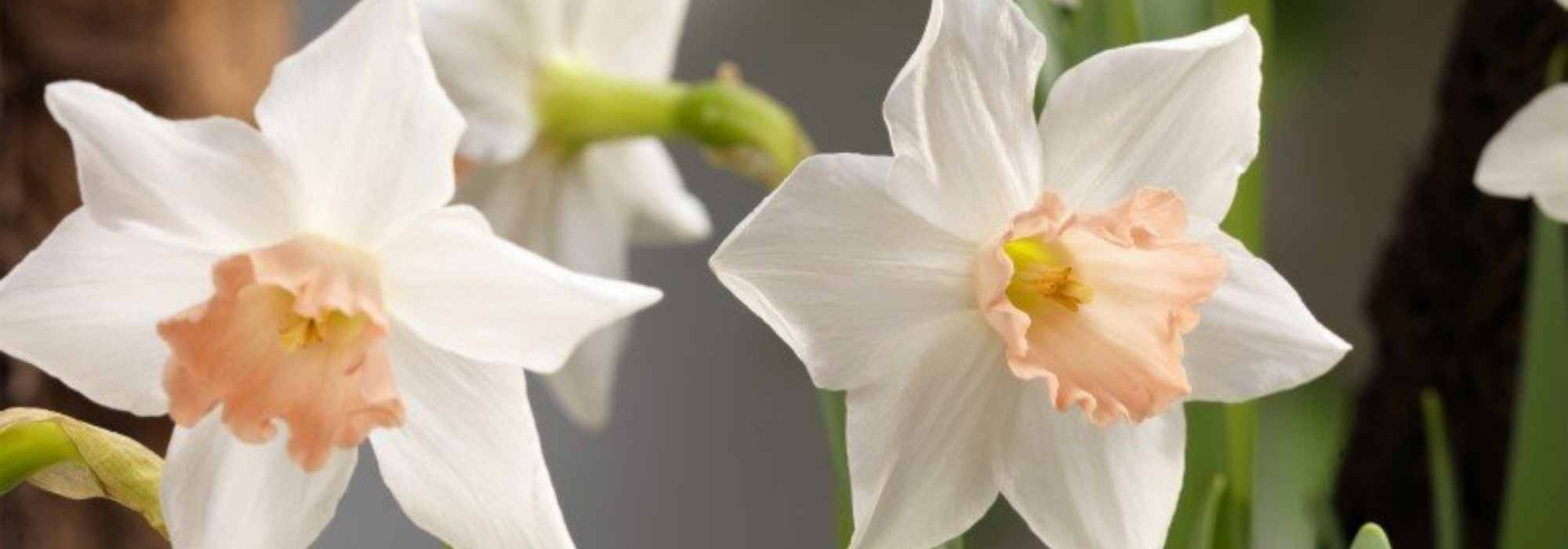
5 dwarf narcissi with unusual flowers to discover
Our selection of original mini daffodils to brighten gardens and pots
Contents
They are among the first flowers to show their petals in late winter: daffodils bring to the garden light, colour and even fragrance, depending on variety. Easy to grow, hardy, returning naturally each year, these bulb plants have many advantages.
There are hundreds of varieties of daffodils, but do you know the smallest among them, dwarf daffodils or mini daffodils, which measure between 15 and 25 cm in height?
Spotlight on our 5 favourite miniature daffodil varieties: their characteristics, strengths and different ways to combine them, whether in open ground or in potted displays.
→ Discover our full fact sheet: Narcissus or daffodil: planting and care
→ Discover our advice sheet: Which Narcissus or daffodil to choose?
Narcissus bulbocodium 'Cantabricus' (White): elegant white trumpet-shaped flowers
Narcissusbulbocodium ‘Cantabricus’ is a mini-daffodil close to a botanical species found in France in Languedoc-Roussillon and Gironde. Its white flowering is unusual: its 6 small slender petals are upstaged by a large trumpeted crown, which gives the plant its other name ‘Medusa’s Trumpet’. This crinoline-shaped white flower measures about 3 to 4 cm in diameter and 1.5 to 2.5 cm in length. The daffodil reaches about 10 cm in height at maturity. Its herb-like foliage is deciduous: it disappears in summer.
Narcissus bulbocodium ‘Cantabricus’ flowers from November in mild climates with moderate winters and from February in cooler regions. Although the plant is less hardy than other daffodil varieties (-10°C), it nevertheless tolerates heat and drought in summer.
This mini-daffodil should be grown in well-drained soil (aerated, not allowing water to stagnate), even dry during the summer season.
Why choose the daffodil ‘Cantabricus’?
- For its very original white, funnel-shaped flowers
- For its early flowering starting in autumn in mild regions
- For its ability to withstand hot, dry summer climates
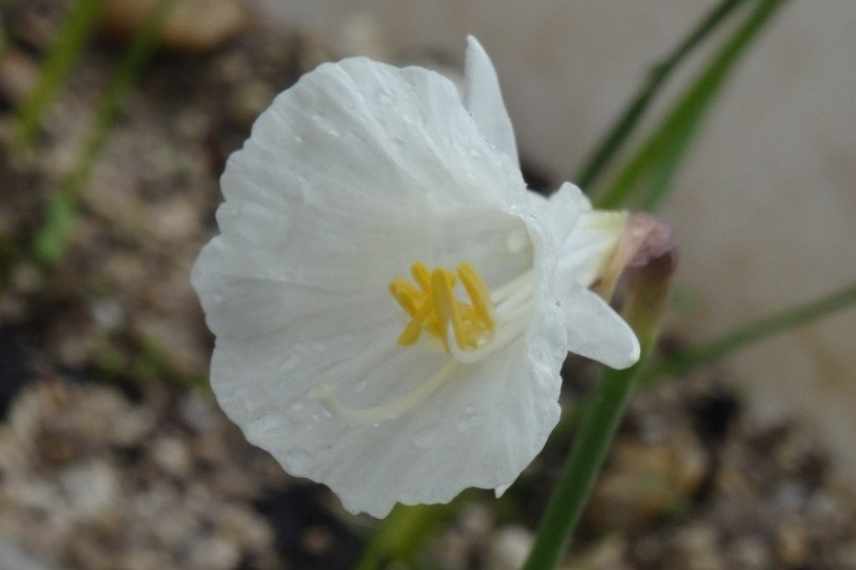
How to combine the dwarf bulbocodium daffodil ‘Cantabricus’ in the garden?
For an elegant, delicate uniformity of colour, Narcissus bulbocodium ‘Cantabricus’ can be paired with other white flowers, such as:
- hyacinth ‘du Cap’ and its little bells
- hyacinth ‘Carnegie’, with its fragrant spikes
- Oriental hellebore ‘Double White’ and its large double flowers
- muscari ‘White Magic’, pure white
This mini-daffodil can also be grown alone, planted in groups in clumps of several bulbs, for a lovely effect in a border or on a short grass meadow.
In a flowering container in a pot or trough, ‘Cantabricus’ will also pair very well with other dwarf daffodils.
Narcissus 'New Baby': late variety with pretty bicoloured flowers
Narcissus ‘New Baby’ offers beautiful bicoloured flowers: petals are white, edged with a golden-yellow rim. The crown is pale yellow. Variety is very floriferous: each bulb bears one or two inflorescences, from which 3 to 5 scented flowers open. Young plant reaches a height of 25 cm at ripeness. Narcissus ‘New Baby’ has a late flowering from mid‑April to May. Very hardy, it will thrive in full sun or partial shade, in rich, well‑drained soil. Also suitable for heavy clay soil.
Why choose narcissus ‘New Baby’?
- For its unusual white and yellow flowers
- A floriferous variety
- For its late flowering
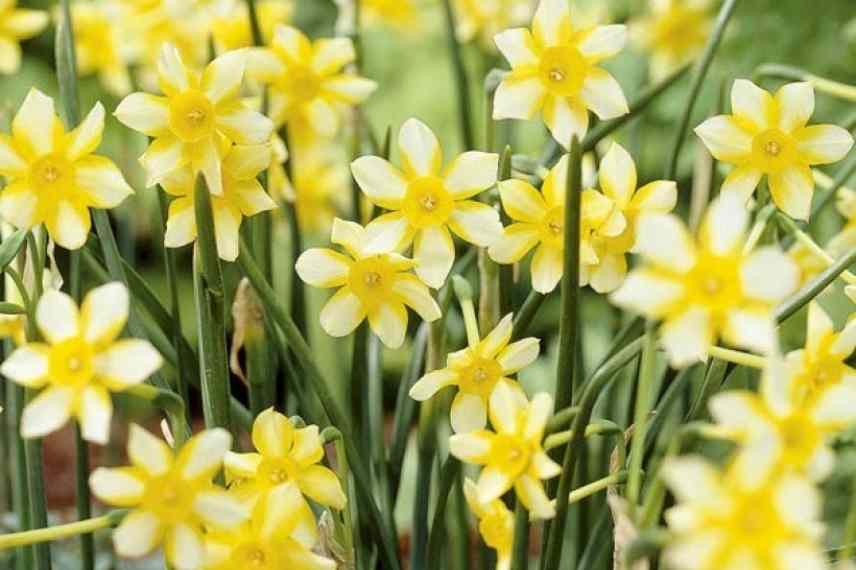
How to pair dwarf narcissus ‘New Baby’ in the garden?
To liven up a border, pair narcissus ‘New Baby’ with other colourful spring bulb flowers, such as:
- muscari armeniacum and its small fragrant clusters of blue or violet flowers
- Virginia hyacinth and its blue bell‑shaped flowers
- hyacinth ‘Gipsy Queen’ and its fragrant spikes, ranging from coral‑pink to orange
- early tulips ‘Couleur Cardinal’, ‘Purple Prince’ or ‘Christmas Dream’
- fritillaries, to add height contrast
‘New Baby’ is also suitable for rockeries or containers, for example alongside the pure white flowers of anemone de Caen coronaria ‘The Bride’.
Discover other Narcissi - Daffodils
View all →Available in 1 sizes
Available in 1 sizes
Available in 1 sizes
Available in 1 sizes
Available in 1 sizes
Available in 1 sizes
Available in 1 sizes
Available in 1 sizes
Available in 1 sizes
Available in 1 sizes
Narcissus 'Reggae': early flowering and delicate colour
narcissus ‘Reggae’ belongs to species cyclamineus from north-west Portugal and Spain, its name referring to its reflexed corolla petals, as in cyclamens. It is the result of a cross-breeding between varieties dating from 1981. This miniature narcissus produces small scented flowers 5 cm across, consisting of a pearly white crown of petals, slightly reflexed. Its beauty lies in heart of flower, a salmon-pink undulate trumpet revealing a contrasting yellow-green centre. At ripeness it reaches 25 to 30 cm in height. It belongs to early narcissi, coming into flowering as early as February in mild climates and in March in regions with harsher winters.
This hardy and robust dwarf narcissus is easy to to grow. It prefers well-drained soil and only dislikes soil that is too wet in summer.
Why adopt narcissus ‘Reggae’?
- For its uncommon bicoloured flowers
- For its undemanding cultivation
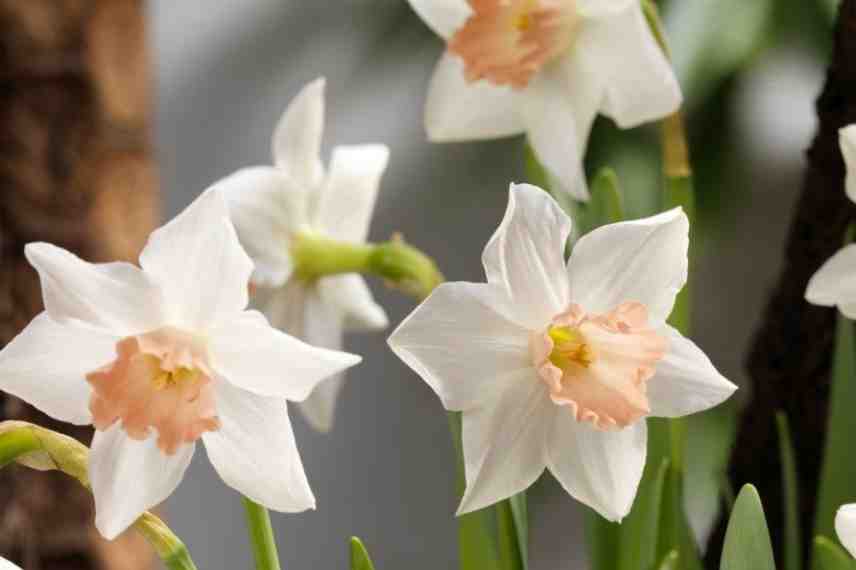
How to combine dwarf narcissus ‘Reggae’ in the garden?
Narcissus ‘Reggae’ will find its place equally well in rockeries or border edges, as in pots or containers for magnificent flowering displays.
It can be paired with other varieties of mini-narcissi for a beautiful contrast of colours, such as:
- variety ‘Rapture’ and its famous yellow flowers, with its trumpet-shaped centre
- ‘Jet Fire’ and its sparkling orange centre
- ‘Spring Sunshine’, with pale yellow petals and an orange crown
- variety ‘Topolino’, with its corolla of white petals and yellow trumpet centre
It can also be paired with other flowers: crocus, hyacinths, hepatica, cyclamen coum or pansies.
To play with contrasts, use its pale flowering to emphasise stronger colours of other flowers:
- Spanish hyacinth and its drooping blue bells
- double hyacinth ‘Hollyhock’ and its large double pink flowers
- magnificent dark Iris reticulata ‘Blue Note’ or ‘Djit’
- clusters of tender pink star-shaped flowers of Scilla bifolia ‘Rosea’
Daffodil 'Tête Bouclée': beautiful double pompom flowers
Daffodil ‘Tête Bouclée’ is a pretty daffodil descended from the variety ‘Tête à Tête’, which, like ‘Reggae’, belongs to species cyclamineus.
Each stem bears 2 to 3 double pompom-like flowers with numerous petals, a bright yellow highlighted by an amber or orange centre. Fragrance is light.
This miniature daffodil reaches 20 cm in height and flowers in spring, at the end of March.
It likes well-drained soil that retains moisture in summer, and will acclimatise easily in the garden.
Why choose daffodil ‘Tête Bouclée’?
- For its multiflorous flowering (each stem bears several flowers)
- For its charming pompom-shaped flowers
- For its early flowering
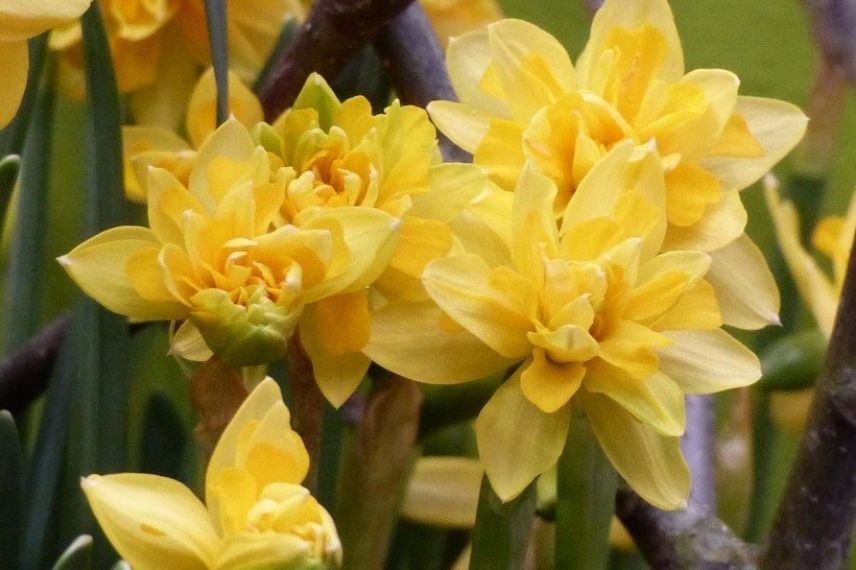
How to combine dwarf daffodil ‘Tête Bouclée’ in the garden?
Mini daffodil ‘Tête Bouclée’ will brighten rockeries, borders or planters.
It can be paired with muscari, colourful hyacinths or forget-me-nots: ‘Roi des Carmins’ with its pink flowers and yellow eye or ‘Snowsylva’ with its white flowers and yellow eye.
The shape of its flowers gives a natural, wild effect, making it equally suitable for a flowering meadow, alongside early annuals in mild climate and which self-seed easily:
- yellow cosmos ‘Xanthos’
- nasturtium ‘Baby Orange’
- mallow-poppy
- common mallow
- red poppy
- French marigold ‘Bonanza Orange’
Narcissus tazetta 'Minnow': a several-flowered, fragrant variety
The narcissus tazetta ‘Minnow’ is once again a several-flowered narcissus, each stem bearing five graceful small bicoloured flowers. Its pale yellow or cream-white crown petals surround a small bright yellow trumpet. The 3 cm flowers are highly scented: this is the most fragrant dwarf daffodil variety presented here. Stems reach 20 cm in height at ripeness.
Like many mini daffodils, it is hardy and easy to cultivate. This variety has even won awards in England for its garden qualities.
Flowering occurs in late March in regions with mild winters, or in April in cooler areas.
Why adopt narcissus tazetta ‘Minnow’?
- It is a floriferous variety
- For its very fragrant flowers
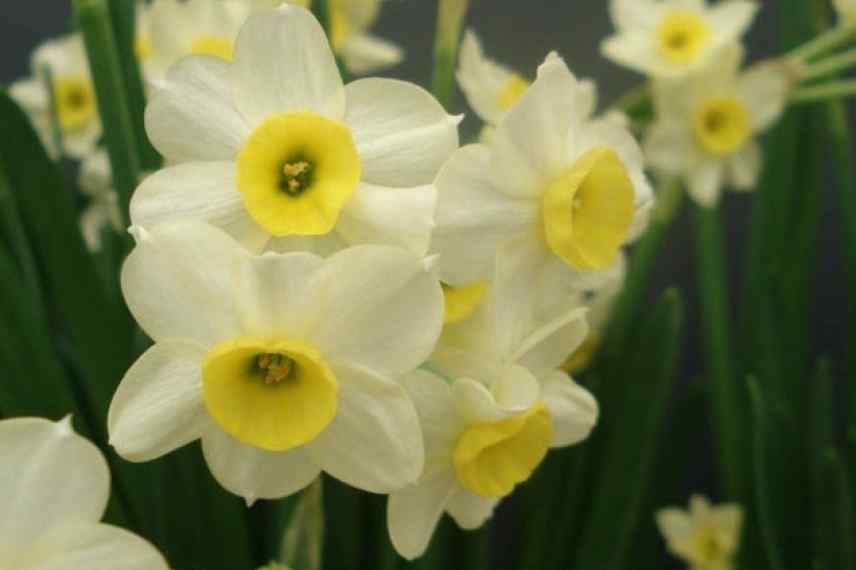
How to combine dwarf tazetta ‘Minnow’ narcissus in the garden?
Narcissus tazetta ‘Minnow’ will brighten window boxes and pots on terraces, balconies or windowsills.
To make the most of its scent, pair it with other tazetta narcissi with yellow and white flowers of species tazetta:
- narcissus tazetta ‘Laurens Koster’
- narcissus tazetta ‘Erlicheer’
- narcissus tazetta ‘Canaliculatus’
‘Minnow’ also pairs very well in meadow with Anemone blanda: ‘Blue Splendour’ with sky-blue flowers, ‘Charmer’ with pink-and-white flowers, ‘Blue Shades’ with blue flowers and yellow centres or “White Splendour”, whose white petals will set it off.
In rock gardens, it can accompany the graphic Sempervivum and sedums with evergreen foliage or the botanical tulip batalinii ‘Yellow Jewe’, with scented lemon-yellow flowers and red stamens.
Finally, dwarf ‘Minnow’ narcissus will also scent and adorn bouquets.
Note that narcissi contain a substance that makes other flowers fade, which is why non-mixed bouquets are preferable.
If you still wish to combine them, for example in a bouquet of tulips, one tip is to dip the ends of narcissus stems in hot water for a few minutes; this treatment would attenuate the narcissus’ harmful effect on other flowers.
- Subscribe!
- Contents
































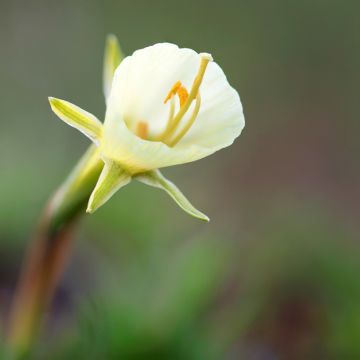
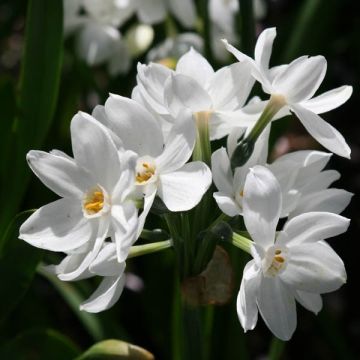
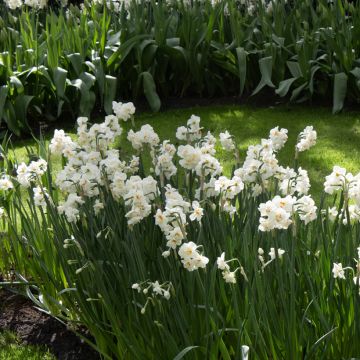
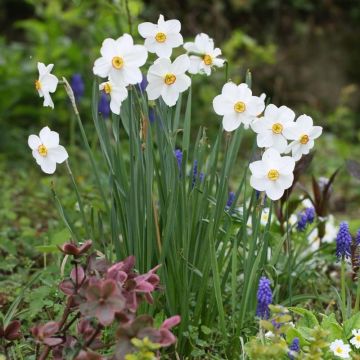
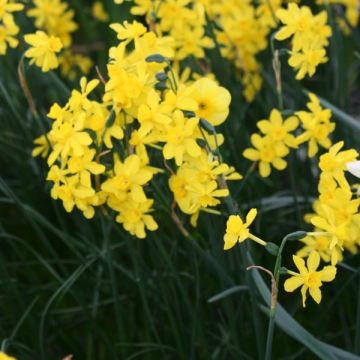
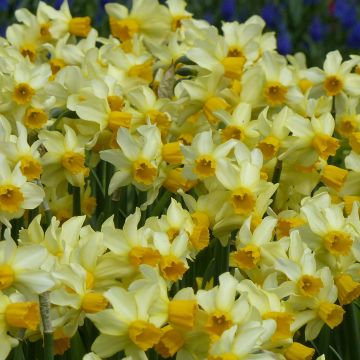
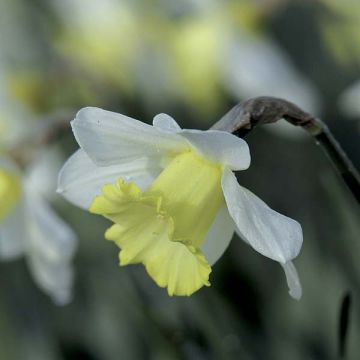
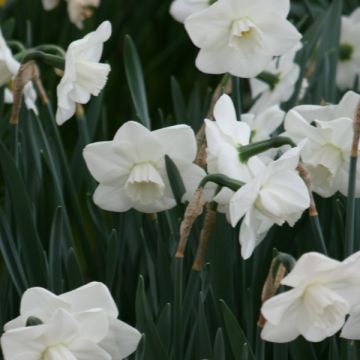
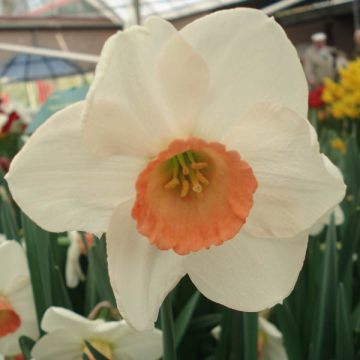
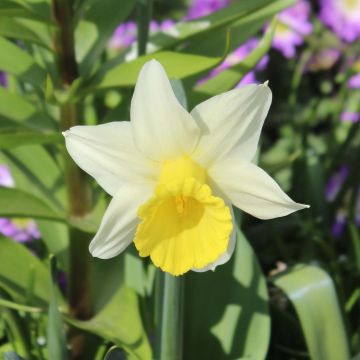
Comments